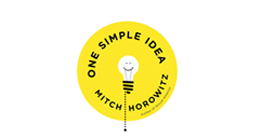Positive psychology gurus and coaches give lots of advice about how we should lead our lives. Their threat is that if we don’t follow their advice, we will not only be unhappy, we risk sickness and death.
When Barbara Ehrenreich’s Bright-Sided: How the Relentless Promotion of Positive Thinking Has Undermined America was published outside of the United States, the book was retitled Smile or Die. The publisher was concerned that non-native English speakers might not understand the play on words in the original title. I think the retitling is actually more apt in capturing the message of positive psychology: buy our advice, buy our books, attend our workshops or die.
Positive psychology claims to distinguish itself from New Age hucksters and silliness because it is based on solid science, top-notch research. These claims have recently fallen on hard times.
First, there was the savaging of Barbara Fredrickson’s absurdly precise positivity ratio. She had claimed in books and workshops that a balance of 2.9013 of positive to negative feelings was necessary to flourish. A team consisting of a psychology graduate student, a psychology professor, and a physicist critically examined the original journal article, “Positive Affect and the Complex Dynamics of Human Flourishing,” on which these claims were based. They concluded,
We find no theoretical or empirical justification for the use of differential equations drawn from fluid dynamics, a subfield of physics, to describe changes in human emotions over time; furthermore, we demonstrate that the purported application of these equations contains numerous fundamental conceptual and mathematical errors.
One of the authors, physicist Alan Sokal, later remarked,
The main claim made by Fredrickson and Losada is so implausible on its face that some red flags ought to have been raised.
Then there was the demise of Fredrickson’s claim to have used genomic analysis to resolve the classic question of whether people should just strive for happiness (hedonic well-being) or pursue meaning (eudaimonic well-being) in their lives. Fredrickson claimed to find that “hedonic and eudaimonic well-being engage distinct gene regulatory programs despite their similar effects on total well-being and depressive symptoms” and came down on the side of striving for meaningfulness.
Fredrickson explained to her results to the media:
It’s not the amount of hedonic happiness that’s a problem…It’s that it’s not matched by eudaimonic well-being. It’s great when both are in step. But if you have more hedonic well-being than would be expected, that’s when this [gene] pattern that’s akin to adversity emerged.
So, the heading of an Atlantic article:
People who are happy but have little-to-no sense of meaning in their lives have the same gene expression patterns as people who are enduring chronic adversity.
The basis for the claims had appeared in the prestigious Proceedings of the National Academy of Science (PNAS). But I showed in a blog post that like the positivity ratio, these claims were based on statistical nonsense. The Short Flourishing Scale supposedly measures distinct concepts of eudaimonic well-being versus hedonic well-being. But scores were so highly correlated (.71) that two could be considered to be assessing facets of the same characteristic. It is only by voodoo statistics that they could be shown to be related differently to gene expression. Complicated multivariate statistical analyses were used to produce results that were an artifact of the analyses, not the patterns in the original data.
I examined the original reports concerning the scales and the data presented in Fredrickson’s PNAS paper and I could not understand the basis for her claim that these scales provided valid and reliable assessments of personal characteristics. The supposedly contrasting scales certainly did not have a needed discriminant validity for measuring two distinct concepts. To examine content validity, I looked at the actual items. I found some particularly serious problems with the measure of eudaimonic well-being.
The general question is phrased “During the past month how often did you feel…?” And the six response options are “never, once or twice, about once a week, about two or three times a week, almost every day, or every day.” The specific items to be evaluated were
- that you had something important to contribute to society,
- that you belonged to a community (like a social group, your school, or your neighborhood)
- that our society is a good place, or is becoming a better place, for all people
- that people are basically good
- that the way our society works made sense to you
The documentation for the scale cautions:
The original wording for item 6 was ‘that our society is becoming a better place for people like you.’ This item does not work in all cultural contexts.
Indeed. But I think there are more defects in the construction of this scale.
Positive psychology has been criticized for overemphasizing the potential of individuals to transcend their circumstances. But not every life context affords the same opportunities for flourishing. The promise “smile, think positive thoughts, and you will be happy and healthy” underestimates the importance of social context for psychological well-being and health. Look at these items with that criticism in mind.
It would be fascinating to do a cognitive interview assessment of what respondents are actually thinking about when they complete the items. I think there are strong class and minority/majority differences. Certainly, priveleged white people have many more opportunities to draw upon than low-income minority persons to feel they contributed something to society and much more basis for concluding that our society is a good place and the way it works makes sense.
In its pencil and paper and online self-assessments, positive psychology assumes that it is personal characteristics that are being assessed and that they are modifiable with the advice and exercises that the workshops and the books provide. The emphasis on character and character-building is neo-Victorian. Positive psychology assumes that life is a level playing field except for the advantages or disadvantages that people have created for themselves. It is not circumstances that matter, so much as what we think about them.
Once we acknowledge the contribution of socioeconomic circumstances, it can be readily seen that for many people, it is not personal characteristics driving responses to these items. In the case of the poor and minorities and other disadvantaged people, responses can be driven by overwhelmingly crushing characteristics of their circumstances.
Undoubtedly, rich white persons in the suburbs are more likely to score high on these measures. Positive psychology is applied ideology, not science, in encouraging them to congratulate themselves on the personal achievement the high score represents. And if they are still unhappy or in ill health, the problem lies with the personal characteristics and their modifiable attitudes.
As for the poor and disadvantaged and the physically ill, they have only themselves to blame. As a wealthy positive psychology entrepreneur recently declared “Your attitude is the reason you are poor.” He went on to cite Barbara Fredrickson:
In an article in the Journal of Business Venturing, leading positive psychology researcher Barbara Fredrickson found positive emotions help build essential resources for entrepreneurs. Among those resources, the top three she found were social capital, resilience, and big picture thinking.
‘It’s not just one of those things that’s going to matter more than the others,’ Fredrickson said. ‘All three are part of a larger web that creates an upward spiral.’
So what is the solution to poverty and social inequality? Poor people have to think positive, start smiling, and express gratitude. What a program for individual and social change—or a shameful fraud. As Barbara Ehrenrich has pointed out in Bright-Sided (or Smile or Die), the downside of this ideology is personal self-blame and national denial. Reviewing Bright-Sided, Thomas Frank remarked,
We’re always being told that looking on the bright side is good for us, but now we see that it’s a great way to brush off poverty, disease, and unemployment, to rationalize an order where all the rewards go to those on top. The people who are sick or jobless—why, they just aren’t thinking positively. They have no one to blame but themselves.
More at Tricycle:
|
MAGAZINE: MIND MATTERS Lawyer and writer Hawa Allan reviews One Simple Idea: How Positive Thinking Reshaped Modern Life by Mitch Horowitz. |
BLOG: THICH NHAT HANH EMERGES FROM COMA The latest update on the health of one of the world’s most renowned Buddhist teachers. |
Thank you for subscribing to Tricycle! As a nonprofit, we depend on readers like you to keep Buddhist teachings and practices widely available.


